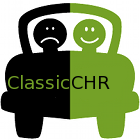Radio music scheduling is about pinpointing and envisioning your target audience – and fulfilling its expectations all the time. “A good music director always keeps the listener in mind.”
Uunco Cerfontaine is program director of the Dutch Sky Radio Group. He was speaking about music scheduling basics for an audience of young talents during DeRadioDag (TheRadioDay) in Holland, using case studies from the national market. I took some notes for you, so here we go!
 Hybrid radio formats
Hybrid radio formats
The Dutch radio market is something else compared to many other countries. The majority of (both public and privately owned) stations in the Netherlands has a hybrid music format, like the combination of CHR and Classic Hits. Cerfontaine: “This morning I heard Bruce Springsteen’s Dancing In The Dark on Radio 538. It would be impossible on a hit music station such as Z100.” (Some Dutch stations adapt their music format to the daypart as well.)
Advertisers target 20-49
“You need an exact picture of the audience you want to reach, and to know which group of people you’re reaching right now”, the program director says. “Then you can focus on getting the listeners that you want.” Many stations in the Netherlands try to attract a young adult audience, as the majority of advertisers aims at the 20-49 (especially 20-34) demographic. (In the USA, this already has moved towards 25-54.)
 Don’t make everyone a bit happy
Don’t make everyone a bit happy
The majority of stations is programming for people under 50 years. So each radio brand needs to focus on a certain piece of the pie. To be different from competitors and for an even more simple reason: a 22 year old is in a totally different life phase than a 48 year old. “Even if they do share some favorite songs… it’s a narrow focus that leads to broad results. Instead of making everyone a bit happy, make a specific group of people very happy.”
Attract younger listeners
The female oriented Sky Radio was launched in 1988 and many loyal listeners from the early days are now 40 years and older. Still playing the same Soft AC ballads from Whitney Houston and Céline Dion doesn’t give the new audience generation a reason to tune in. So how to attract listeners in their late twenties and early thirties – without alienating your existing and loyal audience?
 Refresh your content
Refresh your content
Cerfontaine’s opinion is that “you do have to stay within your main format boundaries, but you can refresh your content – like introduce younger radio personalities or add more current music.” Sky Radio used the tactic to slowly leave out songs and artists that only appeal to older listeners. At the same time, Modern AC artists (such as Colbie Caillat and Michael Buble) were added. This was spread over a longer period of time.
Have a clear music policy
If you can identify songs that most of your listeners like well, and if your current audience and the one you’d like to attract are closely related – perfect. It gets tricky when you currently don’t reach your desired audience at all. “You might have to expand your format. There is a risk that your current listeners will be confused. If they leave, it could take a while before the desired audience arrives.”
 Exception: heritage radio stations
Exception: heritage radio stations
Strong and established brands sometimes get away with a wider playlist. A good example is 3FM, a true heritage station and the Dutch public radio CHR (Modern Rock image) brand. They play a mix of new music, current hits and a variety of Pop-Rock classics. 3FM jocks have free choices and they can even suggest playlist changes as they sit down with the music director. Despite the less tight schedule, 3FM is high up in the ratings.
Attract P2 listeners (but focus on your core audience)
Apart from being a leader in their target demo (20-34), 3FM is performing very well in 35-49. Cerfontaine thinks that’s because “they have a great flow, combined with a popular morning show and social radio events like Serious Request”. The 35-49 part of 3FM’s listeners often prefers another station (P1, preference 1) but considers 3FM to be the best alternative (P2). Although extra P2 traffic is welcome, the interests of the P1 audience should always prevail (if these P1 listeners reflect your target audience).
 Eliminate your personal taste
Eliminate your personal taste
Sky Radio plays a fair amount of current music, so the latest releases offered by record companies are being discussed every week. It’s not always easy to decide what songs to add. Cerfontaine advises that “music decisions should be taken by a group of preferably three people. It eliminates your personal taste and belief and makes the decison process easier. Otherwise it may be tempting to think: I like this song, and it can’t hurt that much…”
Base decisions on your format and audience
The urgency of adding a new song depends on the format and if it’s a core artist for the audience. Radio 538 plays the newest Lady GaGa as soon as possible, while there’s no rush for Sky Radio which is much more conservative. AC stations usually wait until new songs are established and test well. “On the other hand we’d like to add the newest Michael Buble soon, as we know that the Sky-audience loves him.”
 Add new songs at the right time
Add new songs at the right time
According to Cerfontaine, radio programmers need to put their personal perception aside. “The bottom line is to ask yourself: how important is this song for my target audience right now?” He warns for a dangerous ego trap. “Don’t try to impress your peers in the radio industry by being hip, because then you will totally go the wrong way. The only thing that matters is the radio audience. A good music director always keeps the listener in mind.”
Exception: progressive music formats
There is an exception: small stations with a progressive format (Alternative Rock, Modern Rock, etc.) as their listeners want and expect to be introduced to new music. On smaller, alternative stations, music directors can rely more on their own expertise. “However, if you’re a big commercial station for a mass audience, you have to play it safe.”
Read also: Music Scheduling: Science Meets Art





I love the way you outlined the whole article. Thanx very much coz it has really helped me out. Hope to lean more by reading articles about music management.